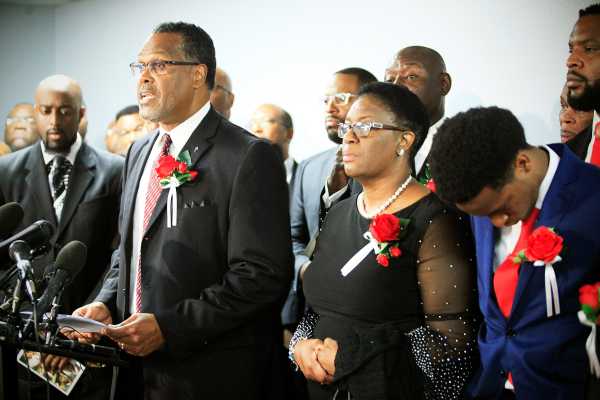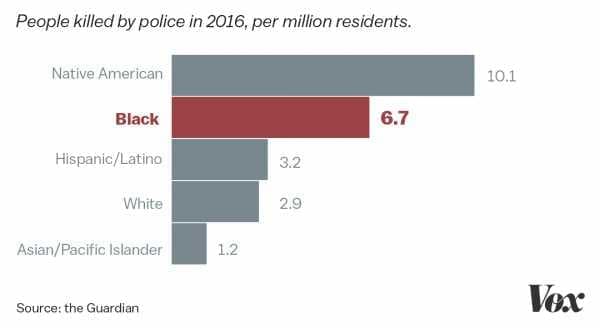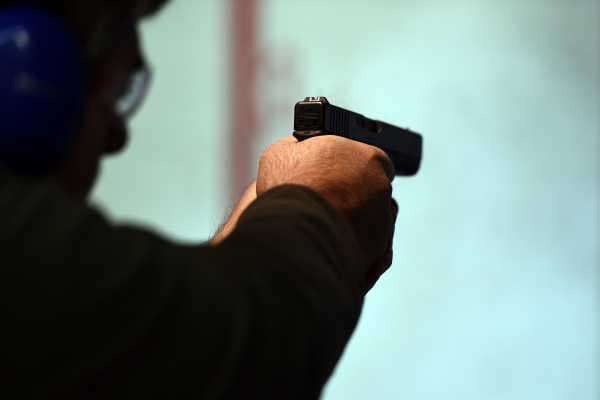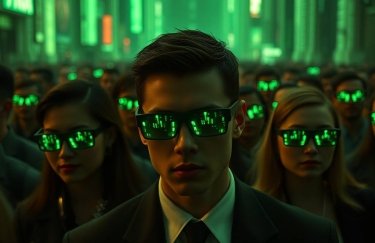
Botham Shem Jean, a black man, was in his own apartment in Dallas last Thursday when Amber Guyger, his downstairs neighbor and an off-duty police officer, shot him inside his own apartment. One week after the shooting, those are the only details that are certain.
Everything else remains a mystery.
Jean was not accused or suspected of any crime. Guyger, a four-year veteran of the Dallas Police Department, says the shooting was an accident — the tragic culmination of a series of missed warning signs that revolve around a mistaken belief that she was in her own apartment.
According to Guyger’s account, when she arrived home to the South Side Flats apartments on September 6, she didn’t realize she had gotten out on the wrong floor of her building and that the apartment she was in was not, in fact, hers. Seeing a “large silhouette” in the dark apartment, she said she thought she was being burglarized. So she shot, hitting Jean in the chest. When she turned on the lights in the apartment, she realized her mistake, CNN reported.
The family of the 26-year-old Jean disputes this, arguing that Guyger’s story doesn’t add up. And for the past week, new details in the case have only added to the confusion, raising more and more questions about what happened that night and why Jean, a St. Lucia native who moved to Dallas after graduating from school, was killed in his own home.
The details of the shooting are almost hard to believe. And the handling of the case so far has left community members and Jean’s family frustrated and concerned that his death will become the latest instance of a police officer being allowed to fatally shoot an unarmed black man and facing no repercussion.
There are plenty of questions and few answers about the shooting
The immediate hours after the shooting raised plenty of questions about what exactly happened inside Jean’s apartment and why the shooting took place. More than one week later, much of that confusion still remains, as Dallas police and Jean’s family offer very different accounts of what happened on the night of September 6.
Efforts to understand what happened have been complicated by variations in official police documents on the case. According to the September 7 search warrant, Dallas officers said that Guyger, unaware that she was on the building’s fourth floor instead of its third, attempted to enter the apartment with her key when Jean opened his front door. “A neighbor stated he heard an exchange of words, immediately followed by at least two gunshots,” the warrant noted. This account suggests Jean was shot at his front door.
But the details of a September 9 arrest affidavit filed after Guyger turned herself in to police are quite different. That affidavit says Jean was actually shot farther into his apartment. In that account, which was written after an interview with Guyger, the officer returned home after her shift, unaware of the floor she was on, and attempted to use an electronic key to open the apartment front door. However, the door was slightly ajar, and the force of using her key pushed the door open, despite the fact that her key did not open the lock.
Guyger then entered the apartment and after seeing a “large silhouette” issued verbal commands and then fired twice, striking Jean in the chest. She did not realize the mistake until she turned on the lights, called 911, and checked the apartment number outside the door.
Jean’s family has disputed this account of the shooting. Attorney Lee Merritt, who is representing Jean’s family, said that he spoke to witnesses who heard Guyger knocking on the door and yelling, “Let me in,” prior to the shooting. But these accounts are not included in the police search warrant or arrest affidavit because, officers said, the witnesses did not share these details with police.
“Much of the affidavit doesn’t comport with common sense,” Merritt told CNN on Tuesday. “Certain statements are demonstratively false.”
The lack of clear answers has fueled rampant speculation, and some of it, like the possibility of a relationship between Jean and Guyger, has been swiftly dismissed by the family. A neighbor of Jean’s has also called attention to details, like a red doormat outside Jean’s door, that Merritt says should have alerted Guyger to the fact that she was at the wrong apartment. And for outside observers, one question looming over everything is why a trained officer like Guyger would be so quick to use deadly force in the first place.
Beyond the questions of what led up to the shooting and why it happened, Jean’s family and community members have raised a number of concerns about the pace of the investigation and how it is being handled. They argue that Guyger is receiving deferential treatment that a civilian suspect would not receive, noting that she was charged with manslaughter rather than murder, and that the charge did not come until three days after the shooting.
The family has also become increasingly concerned with what police are sharing about the case, particularly in the wake of recent reports highlighting that a small amount of marijuana was found in Jean’s apartment. Those reports, which came out on the day of Jean’s funeral, cited a police search warrant that had been issued in the hours after the shooting, leading Merritt to argue that police “immediately began looking to smear [Jean],” saying it is part of a pattern that has seen police departments and media position black victims as being culpable for their own deaths.
“They went in with the intent to look for some sort of criminal justification for the victim,” Merritt said Thursday, according to USA Today. “It’s a pattern that we’ve seen before … we have a cop who clearly did something wrong. And instead of investigating the homicide — instead of going into her apartment and seeing what they can find, instead of collecting evidence relevant for the homicide investigation — they went out specifically looking for ways to tarnish the image of this young man.”
On Friday, the family called for Guyger’s immediate termination from the police force. “She should not be on the payroll for the city of Dallas” Merritt noted, pointing to a 2017 shooting that Guyger was also involved in as additional proof that she should be removed.
The shooting puts renewed attention on the Dallas Police Department two years after a gunman shot multiple police officers during a protest in the city and made national headlines. In the days after that shooting, national outlets made much of the police department’s efforts at reform, with the Washington Post calling it a model department and praising its community policing programs.
The Botham Jean shooting has shown that these reforms, which have been accompanied by prosecutions and convictions of some officers involved in misconduct and excessive force, have not entirely erased black and brown residents’ concerns about policing in the city.
In recent days, protesters have renewed their calls for additional reforms, including changes to the local Citizen Police Review Board. They argue that the apartment shooting cannot be disconnected from other acts of police violence in the area, adding that while Jean’s death is not a scenario that immediately comes to mind when police shootings are discussed, it should still raise concerns about police accountability, racial profiling, and racial disparities in police use of force.
“We’re still dealing in an America where black people are being killed in some of the most arbitrary ways: Driving while black, walking while black — and now, we have to add living while black,” Merritt told reporters on Sunday.
Black people are much more likely to be killed by police than their white peers
Based on nationwide data collected by the Guardian, black Americans are more than twice as likely as their white counterparts to be killed by police when accounting for population. In 2016, police killed black Americans at a rate of 6.66 per 1 million people, compared to 2.9 per 1 million for white Americans.

There have also been several high-profile police killings since 2014 involving black suspects. In Baltimore, Freddie Gray died while in police custody — leading to protests and riots. In North Charleston, South Carolina, Michael Slager shot Walter Scott, who was fleeing and unarmed at the time. In Ferguson, Darren Wilson killed unarmed 18-year-old Michael Brown. In New York City, NYPD officer Daniel Pantaleo killed Eric Garner by putting the unarmed 43-year-old black man in a chokehold.
While the circumstances of Jean’s shooting are different from these other high-profile cases, there is one possible explanation for the racial disparities: Police tend to patrol high-crime neighborhoods, which are disproportionately black. That means they’re going to be generally more likely to initiate a policing action, from traffic stops to more serious arrests, against a black person who lives in these areas. And all of these policing actions carry a chance, however small, to escalate into a violent confrontation.
That’s not to say that higher crime rates in black communities explain the entire racial disparity in police shootings. A 2015 study by researcher Cody Ross found, “There is no relationship between county-level racial bias in police shootings and crime rates (even race-specific crime rates), meaning that the racial bias observed in police shootings in this data set is not explainable as a response to local-level crime rates.” That suggests something else — such as, potentially, racial bias — is going on.
One reason to believe racial bias is a factor: Studies show that officers are quicker to shoot black suspects in video game simulations. Josh Correll, a University of Colorado Boulder psychology professor who conducted the research, said it’s possible the bias could lead to even more skewed outcomes in the field. “In the very situation in which [officers] most need their training,” he previously told me, “we have some reason to believe that their training will be most likely to fail them.”
Part of the solution to potential bias is better training that helps cops acknowledge and deal with their potential prejudices. But critics also argue that more accountability could help deter future brutality or excessive use of force, since it would make it clear that there are consequences to the misuse and abuse of police powers. Yet right now, lax legal standards make it difficult to legally punish individual police officers for use of force, even when it might be excessive.
Police only have to reasonably perceive a threat to justify shooting
Legally, what most matters in police shootings is whether police officers reasonably believed that their lives were in immediate danger, not whether the shooting victim actually posed a threat. It’s still unclear what this will mean in Guyger’s situation. During a press conference shortly after the shooting, the Dallas Police Department noted that the incident would be handled differently than other officer-involved shootings.
We also don’t yet know what legal strategy Guyger, who has been charged with manslaughter and may be indicted on more charges by a grand jury, will take. But it’s not difficult to take the use of force legal standard and think of how a lawyer would try to apply it to this case. Yes, Guyger entered the wrong home, but once she was there, she, as a police officer, genuinely feared she was being burglarized. A defense attorney might claim that it is reasonable to fear for her life in that kind of situation — an argument that would seem to justify the use of force.
David Klinger, a criminologist at the University of Missouri St. Louis, told Vox that a major issue in a criminal trial may be “whether she was acting in a law enforcement capacity or as a private citizen.” If she was acting as a police officer, the law gives her more latitude to use force. If she was acting as a citizen, perhaps not.
Pete Schulte, a Texas attorney and former police officer, has said that another legal question will be whether Guyger’s mistake of entering the wrong apartment could be “reasonable under the circumstances.” “If the … criminal jury finds that to be a reasonable mistake, she could be acquitted,” he explained.
In the 1980s, a pair of Supreme Court decisions — Tennessee v. Garner and Graham v. Connor — set up a framework for determining when deadly force by cops is reasonable.
Constitutionally, “police officers are allowed to shoot under two circumstances,” Klingner previously told Dara Lind for Vox. The first circumstance is “to protect their life or the life of another innocent party” — what departments call the “defense of life” standard. The second circumstance is to prevent a suspect from escaping, but only if the officer has probable cause to think the suspect poses a dangerous threat to others.
The logic behind the second circumstance, Klinger said, comes from a Supreme Court decision called Tennessee v. Garner. That case involved a pair of police officers who shot a 15-year-old boy as he fled from a burglary. (He’d stolen $10 and a purse from a house.) The court ruled that cops couldn’t shoot every felon who tried to escape. But, as Klinger said, “they basically say that the job of a cop is to protect people from violence, and if you’ve got a violent person who’s fleeing, you can shoot them to stop their flight.”
The key to both of the legal standards — defense of life and fleeing a violent felony — is that it doesn’t matter whether there is an actual threat when force is used. Instead, what matters is the officer’s “objectively reasonable” belief that there is a threat.

That standard comes from the other Supreme Court case that guides use-of-force decisions: Graham v. Connor. This was a civil lawsuit brought by a man who’d survived his encounter with police officers but who’d been treated roughly, had his face shoved into the hood of a car, and broken his foot — all while he was suffering a diabetic attack.
The court didn’t rule on whether the officers’ treatment of him had been justified, but it did say that the officers couldn’t justify their conduct just based on whether their intentions were good. They had to demonstrate that their actions were “objectively reasonable,” given the circumstances and compared to what other police officers might do.
What’s “objectively reasonable” changes as the circumstances change. “One can’t just say, ‘Because I could use deadly force 10 seconds ago, that means I can use deadly force again now,’” Walter Katz, an attorney who specializes in oversight of law enforcement agencies, previously said.
That is the constitutional standard. There are also different criminal standards at the state level, which may have different interpretations for what is reasonable use of force and what isn’t. But, broadly, police officers are allowed to use force if they reasonably perceive a threat even if a threat is not actually present.
In general, officers are given a lot of legal latitude to use force without fear of punishment. The intention behind these legal standards is to give police officers leeway to make split-second decisions to protect themselves and bystanders. And although critics argue that these legal standards give law enforcement a license to kill innocent or unarmed people, police officers say they are essential to their safety.
For some critics, the question isn’t what’s legally justified but rather what’s preventable. “We have to get beyond what is legal and start focusing on what is preventable. Most are preventable,” Ronald Davis, a former police chief who previously headed the Justice Department’s Office of Community Oriented Policing Services, told the Washington Post. Police “need to stop chasing down suspects, hopping fences, and landing on top of someone with a gun,” he added. “When they do that, they have no choice but to shoot.”
Police are rarely prosecuted for shootings
Much has been made of the fact that it took three days for Guyger to be charged in the shooting, because the Texas Rangers postponed issuing an arrest warrant to gather more information after the case was passed to their agency. Meanwhile, Dallas County District Attorney Faith Johnson has said that the case will be handled fairly and has left the door open to adding more serious charges. “The grand jury is going to have a full picture of what happened in this situation,” she told reporters on Monday.
Police officers like Guyger are very rarely prosecuted for shootings — and not just because the law allows them wide latitude to use force on the job. Sometimes the investigations fall onto the same police department the officer is from, which creates major conflicts of interest. Other times the only available evidence comes from eyewitnesses, who may not be as trustworthy in the public eye as a police officer.
“There is a tendency to believe an officer over a civilian, in terms of credibility,” David Rudovsky, a civil rights lawyer who co-wrote Prosecuting Misconduct: Law and Litigation, previously told Amanda Taub for Vox. “And when an officer is on trial, reasonable doubt has a lot of bite. A prosecutor needs a very strong case before a jury will say that somebody who we generally trust to protect us has so seriously crossed the line as to be subject to a conviction.”
If police are charged, they’re very rarely convicted. The National Police Misconduct Reporting Project analyzed 3,238 criminal cases against police officers from April 2009 through December 2010. They found that only 33 percent were convicted, and only 36 percent of officers who were convicted ended up serving prison sentences. Both of those are about half the rate at which members of the public are convicted or incarcerated.
It is still unclear what will happen next in the case, and it could be months before Guyger appears before a grand jury. But one week after Botham Jean’s death in his own apartment, there is considerable concern that a conviction will not happen. “We will not stand by quietly as what we believe to be false narratives that diminish any culpability for the offending officer are advanced,” Minister Sammie Berry of Dallas West Church of Christ said after Jean’s funeral on Thursday. “The undeniable reality is that he was slain in his home, where he had the right to be and was abiding by the law.”
Sourse: vox.com






